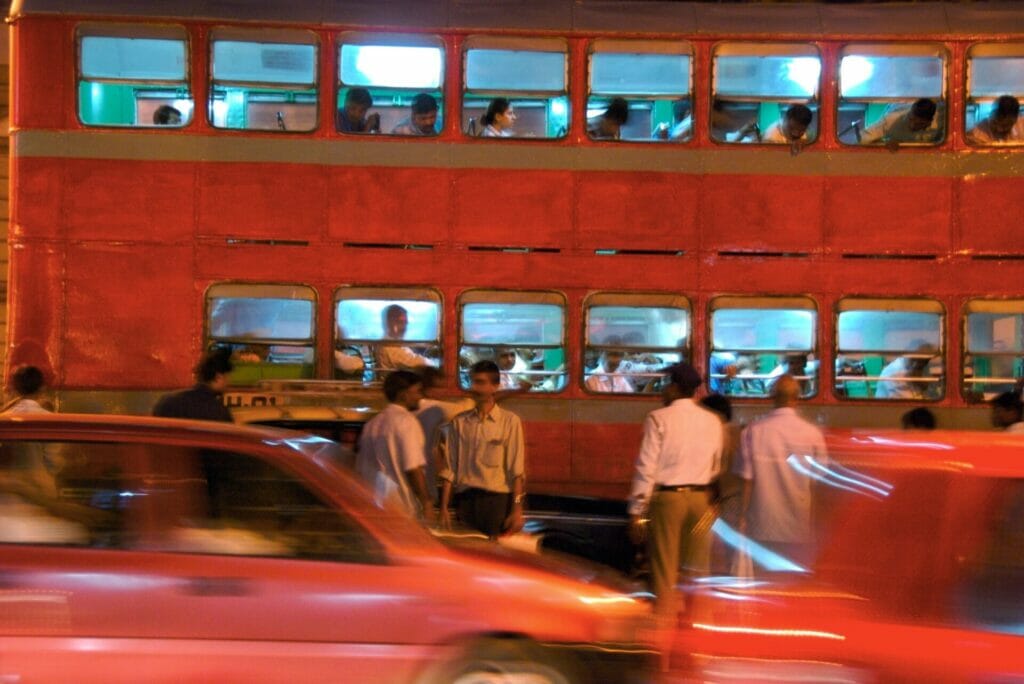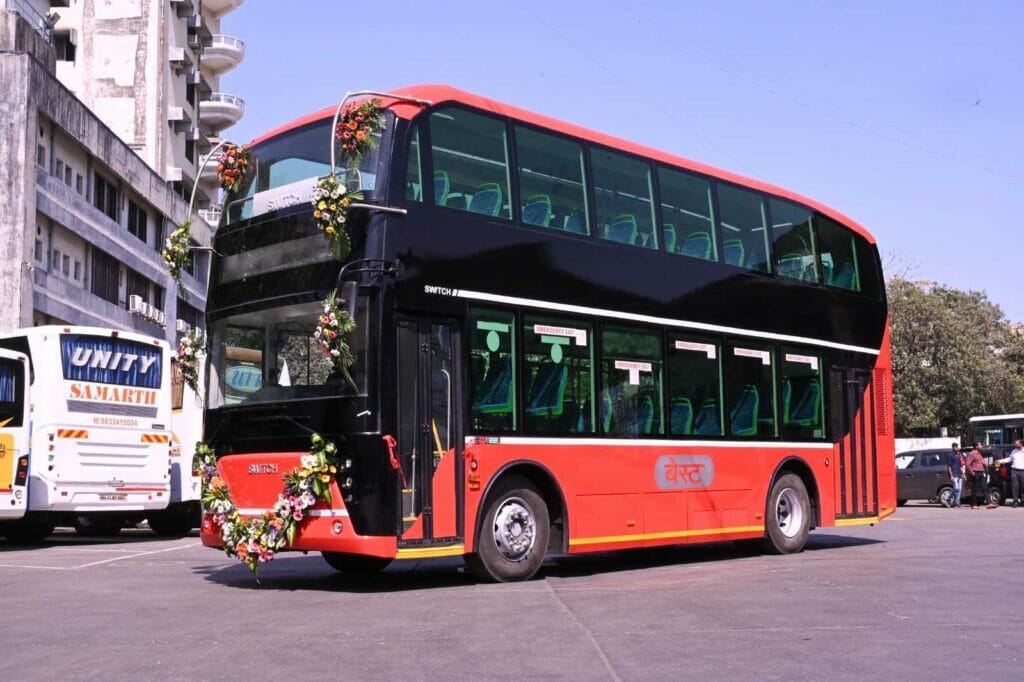In 2019, the Brihanmumbai Electric Supply and Transport (BEST) buses were on their deathbed. Once known for buses that never broke down, it was going through a particularly rough phase. Daily ridership had halved in the previous decade, down from 42 lakh to 25 lakh. Higher ticket fares, discontinuation of the AC Super Routes, rising competition and a workers’ strike in January meant it was losing crores by the month.
Things took a turn for the better in the latter half, when the Brihanmumbai Municipal Corporation (BMC) promised monthly financial aid of Rs 100 crore to tide them over. But this came with conditions: slash prices, increase the bus fleet, and clear off all debts.

New beginnings
The new chapter began with the introduction of the contractor-driven model of wet leasing. The operator owns the vehicles, hires the drivers, takes care of maintenance, and pays for fuel. BEST, in turn, appoints conductors to issue tickets, and pays the contractor on an active kilometre basis; the more a vehicle runs, the more revenue it generates.
The first vehicles to show up under this model were 40 electric Olectra K7Ds through the central government’s Faster Adoption & Manufacturing of Electric vehicles (FAME) scheme. Then came the Force Traveller Smart Citibus, through three different operators (PNM, MP Group and Hansa City Bus). Next, a fleet of 512 Tata LP913 CNG-operated AC midi (larger than a minibus, but smaller than usual) buses followed, spreading through the suburbs under the contractor Daga Group. These were all on the road in the city halfway through 2020.
The craze for electric hit Mumbai when an order of 300 (140 single deck and 160 midi) buses was won by Tata Motors, culminating in a final delivery of 340 Tata Starbus EVs.
The then-general manager of BEST, Dr Surendrakumar Bagde had lofty goals of expanding the fleet up to 6,000 by 2023 and further to 10,000 by 2026-27.

A dwindling fleet of BEST buses
Despite the frenzy to procure more, the Bharat Stage 2 (BS2) buses (running on emissions standards approved in 2001) in the BEST’s arsenal were nearing the end of their shelf life. Scrapping the BS2 double-decker buses in 2021 brought Mumbai’s total double-decker fleet down to 48. The BS3 Ashok Leyland Vikings, 3xxx CNG Series and some 5xxx Series TATA CNG are, at the time of writing this, on their way out.
To replace these, the Undertaking floated a tender of 600 non-AC CNG buses entirely on wet lease, where both the drivers and conductors would be hired on contract. This met with opposition from the BEST Workers’ Union. Negotiations ended with the procurement of only 400 buses, divided equally among the four depots at Pratiksha Nagar, Majas, Santacruz and Dharavi.
These turned out to be helpful in maintaining the frequency of several routes. Passengers frustrated with the TATA Midi and Force Traveller buses sighed in relief as these were spacious and could seat up to 40 passengers.
Read more: Sporadic bus workers’ strikes could continue, so what is BEST doing?
The twist
Amidst this, in 2021, BEST decide to carry out a massive process of route rationalisation, referring to an attempt to modify the route network to make it more convenient for passengers. The network was turned upside down, with several routes curtailed and cancelled. The aim, according to the general manager, was to make travel easier. An average bus passenger was thought to travel in the bus for 10 km or lesser, so the rationale was to ensure an average frequency of 15 minutes.
But in the process, many non-AC buses were replaced with AC midi buses. The smaller size of these only led to more disgruntled passengers. The move turned out to be a disaster.

Chalking out future plans
With around 1,100 AC mini and midi buses in their fleet, BEST slowly geared up to order new single-deck and double-decker buses. With the former guardian and tourism minister, Aaditya Thackeray, came a vision of the complete electrification of the bus fleet. The foundation was laid by ordering 1,400 electric AC single-deck and 200 AC double-decker buses. Simultaneously, work to upgrade the infrastructure required for electric buses began, in anticipation of their arrival.
In mid-2022, Evey Trans Private Limited bagged the tender to supply 2,100 single-deck AC electric buses with a fixed deadline. While there were only meant to be 200 AC double-decker buses, Aaditya Thackeray made an announcement that the soon-to-be 900 electric AC electric buses would be as modern as the ones in London. Out of the 900, 200 were to be delivered by Ashok Leyland’s Switch Mobility. The first of these hit the road on February 21, 2023, while 5 more are expected to join by the month’s end.
The rest are expected to be delivered by CAUSIS Group, a start-up based in the UK that has no double-decker buses running anywhere in the world. The firm it has a tie-up with, Berlin-based Eurabus, has single-deck electric buses running in Kazakhstan, Nepal and Pakistan.
The current number of electric buses expected to enter service is up to 3,200. Only 20 of the single-decker ones have entered service as of yet.
But on the other hand, the Undertaking introduced an electric scooter service in association with VOGO Rentals. Starting in Andheri till Thane in December 2022, the operational fleet is expected to go up to 5,000 scooters. 1,140 of them are already in service.

Problems persist for BEST buses
As a passenger, the poor implementation by the BEST has affected the Undertaking’s reliability when it comes to choosing a secondary mode of transport. Whenever there is an issue with the suburban trains, the buses should cater to the crowd within Mumbai. However, their limited capacity has meant an overdependence on the trains. They are, after all, still the fastest mode of transport.
The planning for feeder bus routes is also way ahead of the metro competition. As a result, BEST seems to be ignoring its long-distance routes by shifting its focus. Depletion of the bus fleet has affected the frequency, and route rationalisation has led to an increased waiting time, instead of decreasing it. When a route is split or cancelled, passengers have to board another bus already packed with passengers. BEST’s changing priorities are affecting its users, and not positively.
The current year is crucial for BEST. No new vehicles for another two months will cost them a loss of at least another 100 buses, considering the rate at which buses are being scrapped. The Undertaking has an aged fleet of which the Bharat Stage 3 CNG Buses will be phased out by 2025. The Force Traveller operator MP Group’s failure to manage the buses and payment of crew has resulted in the discontinuation of AC Buses in Colaba, Worli, Bandra, Kurla and Vikhroli depots. Nearly half of the AC minibus fleet is off the roads, its routes managed by buses from other depots. After three buses caught fire this year, 400 more CNG buses operated by Mateshwari Urban Transport have been taken off the road to investigate the issue.
This is a close call for BEST; it must either expand its fleet or hit rock bottom, losing its image as an ideal public transport option for the people of Mumbai.
In AC mini electric bus it is very slow in traveling because there is no time management in mini AC electric. Buses No. Like 273, 456, 180 other buses 270, 622, these buses are very slow and time consuming. 273 bus have 7 km. Long route only, but it takes 1.5 hour to complete his route. Please, bring or mention this problem in your article, kindly do needful and please oblige.
Brilliant analysis. BEST desperately needs it’s own buses as it is a public service and not for profit. The wet lease method will never be sustainable as they run for profit and during emergency they are never dependable. BEST needs to revert back to its own spacious, ventilated and well maintained red buses